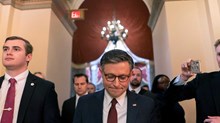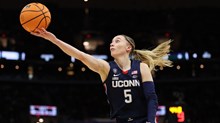Within minutes of the polls closing in November, journalists were reporting results from exit polls including analysis of how evangelicals and other religious groups voted. One of the findings from these polls was that evangelicals (that is, "born again" voters) voted three to one for McCain, with evangelicals in the South more likely to do so than evangelicals in the Midwest.
But exit polls are short, with too few questions on religion. For a clearer picture of religion's role in the election, researchers use surveys that take more time to analyze. One of the best is The National Survey of Religion and Politics conducted by John Green (University of Akron and the Pew Forum).
In the March issue of First Things, Green presents a summary of how religious groups voted in November. The fact that this "summary" runs over 4,000 words speaks to the complexities and nuances of religion in American politics. Green uses a combination of information on religious affiliation, beliefs, behavior, race, and ethnicity to group Americans into no less than 15 different religious groups. He reports how each group voted in 2008 and compares this vote with results from 2004. The result is a clearer picture of how the more things change the more they stay the same in American religion and politics.
Despite punditry on Obama's outreach and McCain's lukewarm (to ice cold) support from some evangelical leaders early in the campaign, evangelicals voted just as they have done in previous contests. Three-quarters of evangelicals voted for McCain, which is the same level of support given to Bush, though Green notes that turnout was lower. Among evangelicals, support for McCain was nearly unanimous among those with more traditional beliefs and practices, with nine out of ten voting Republican. Obama received more support from more "modernist" evangelicals, but even this more moderate group gave its support for McCain. The news, however, is that despite the economy, the war, and at least some campaigning by Obama, evangelicals remained unmoved in their support for the Republican candidate.
There was some movement among other religious groups but most changed support only a bit. Those with no religion voted three to one for Obama. Both Catholics and Mainline Protestants split their support almost 50-50. Again, these patterns are nearly the same as found in the 2004 election.
There were three groups that seem to have made sizeable shifts in their votes.
1. Black Protestants. In 2004, support for Kerry among those attending a Black Protestant church dropped to 83 percent. However, with Obama as candidate, this group returned to its high level of support for the Democrats. As Green notes, 95 percent of Black Protestants voted for Obama, meaning that one in five of Obama's voters were Black Protestants.
2. Traditionalist Catholics. As with Mainline Protestants and Evangelical Protestants, Green differentiates Catholics by their support for traditional beliefs and practices. Traditionalist Catholics are those who hold more orthodox beliefs and are more active in their faith. In 2004, only one fifth of this group voted for Kerry. In 2008, support for the Democrat nearly doubled, with 39 percent supporting Obama. This is one group to watch over the next four years.
3. Ethnic Protestants. Green analyzes "Ethnic Protestants" as a separate religious group. This group is primarily Latino but it includes other non-white, non-Anglo Protestants. This group tends to hold conservative positions on social issues. They gave Bush their vote in 2004, with only 25 percent voting for Kerry. In 2008, Obama received just over half of this group's vote. This is a group that has not solidified its voting. As of now, it is trending Democratic, but its votes are likely up for grabs for next few election cycles.
There is much more that could be said about voting in the 2008 election. Green covers much more than I have summarized here. And with the wealth of information in this latest National Survey of Religion and Politics, there should be more to come on the role of religion in the presidential election.
Tobin Grant is an associate professor of political science at Southern Illinois University - Carbondale.
Statistical Caveat: For those that read Green's article (which I recommend), I offer one piece of advice on interpreting the results in his table. The survey includes many more people than interviewed in most polls. However, with the relative size the religious groups, the margin of error becomes quite large. A group that is only five percent of the survey will have a margin of error of plus or minus eight percentage points. When looking at changes from 2004 to 2008, I would be cautious making too much out of a change less than this, as it may be statistical artifact rather than a real change (all the more reason to be in awe of the stability of evangelical voting). The three groups I discuss each had double-digit increases in their support for Obama vs Kerry.

Support Our Work
Subscribe to CT for less than $4.25/month


















